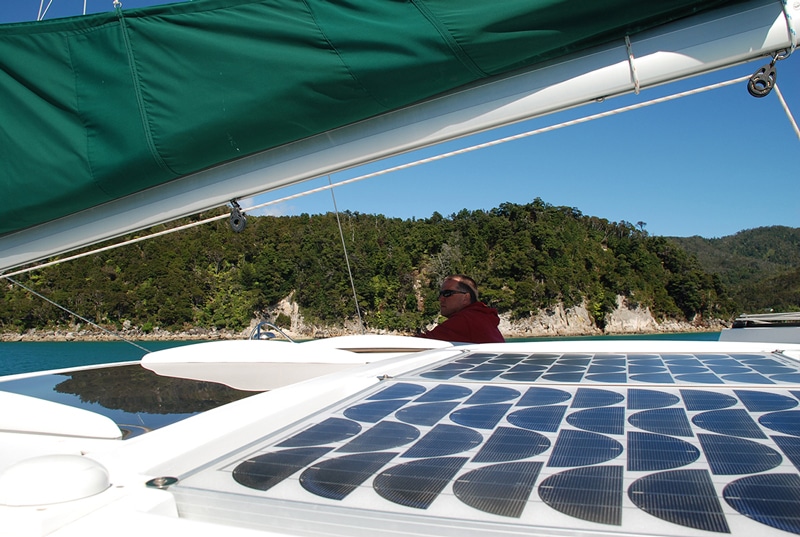
This article is an excerpt from NauticEd’s online Skipper Large Keelboats Course, a comprehensive online sailing course for beginner to intermediate sailors to learn how to sail large sailboats 26 ft (8m) and above. The Skipper Large Keelboats course is part of the Skipper Course Bundle of online courses, also teaching you how to master maneuvering under power and docking!
You can learn to sail and improve your sailing with NauticEd, the international leader in sailing education.
Sailboat Solar Power
Solar panels produce DC power and are used to charge the batteries. A relatively small solar panel such as 1 square foot (0.1 m2) can produce about 1½ amps at 12 volts (18 watts) during daylight hours. It is not practical to charge a battery from completely drained to full using a small say 1sq m solar panel. This would take approximately 3 days of good sunlight. However, a solar panel is excellent for keeping the batteries “topped up.”
Boats that spend an extended time away from the marina often are fitted with a large array of solar panels which produce enough electricity to keep up with the daily demand of energy from the electronics.

Solar Panels
Here is how solar power fits into the electrical supply diagram of the boat introduced previously. Solar panels generate DC electricity which dumps straight into the batteries and is then used by whichever DC device is on.
Below, the engine is running. Follow the path of the electrons. In reality, they collect in the batteries and then discharge out of the batteries to any DC device that is turned on as represented by the pink flashing light. When you turn on solar, electrons flow from the panels through the MPPT controller to the batteries and then to the DC devices. An MPPT controller is used to regulate the flow from the solar panels to the batteries so that overcharging does not occur.
Most of the time solar charging is left on. Thus, in reality, they are charging while the engine is on as well.
You can learn more in the Skipper Course....
Knowledge and theory for longer distances and overnight sailing in diverse conditions. The Skipper Course is a comprehensive online sailing course for beginner to intermediate sailors wanting to learn how to sail larger sailboats 26ft to 56ft. Or upgrade to the Skipper Course Bundle of online courses to also master maneuvering under power and docking!
